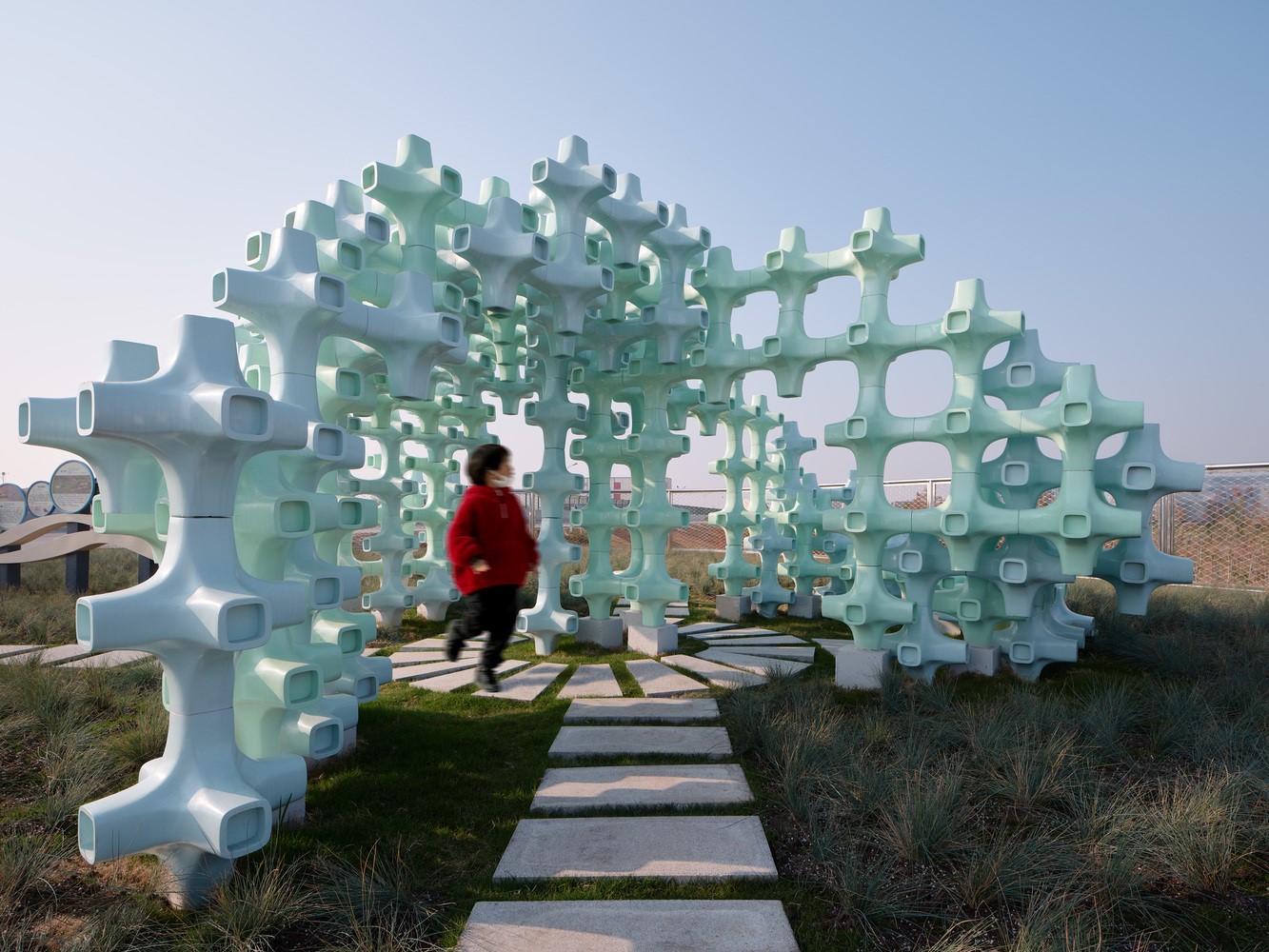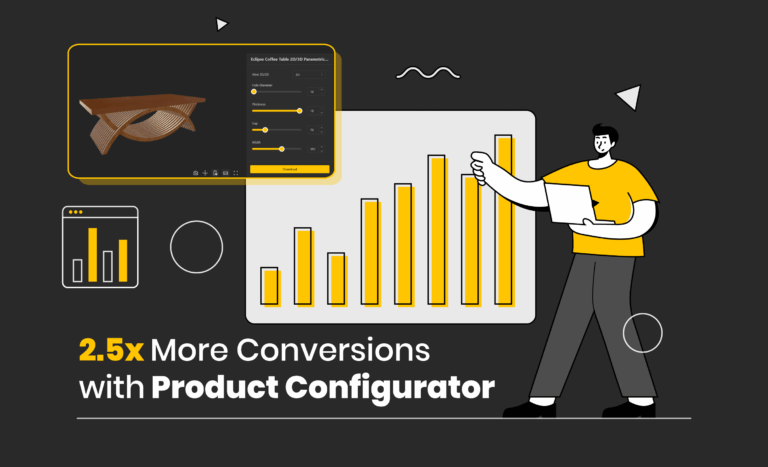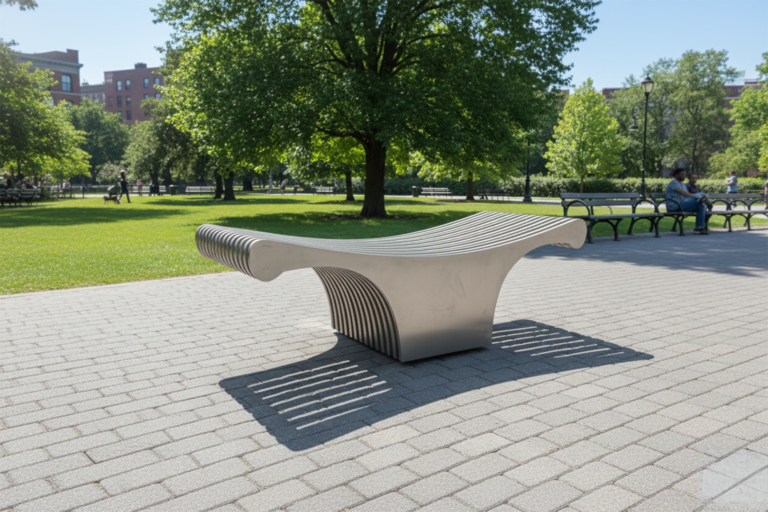Table of Contents
The urban landscape is undergoing a transformative shift, propelled by the fusion of technology and innovative design philosophies. Traditional architectural practices are being reimagined through the lens of parametric design—a cutting-edge approach that leverages algorithms and computational techniques to create complex, adaptive structures. This recent trend of creating Parametric urban installations is not only redefining aesthetics but also enhancing functionality, sustainability, and user engagement in public spaces. In this exploration, we will explore how parametric design is reshaping our built environment and paving the way for the cities of the future.
Understanding Parametric Design in Urban Installations
Parametric design is a process based on algorithmic thinking that enables the expression of parameters and rules that, together, define and encode relationships between design intent and design response. This approach allows architects and designers to manipulate complex data and generate intricate forms that adapt to various environmental and structural constraints.
Key Principles:
- Algorithmic Modeling: Using mathematical algorithms to define shapes and forms.
- Dynamic Systems: Designing structures that can respond to environmental changes.
- Data Integration: Incorporating real-world data into the design process for optimized solutions.
By applying these principles, urban installations become more than static objects; they transform into living components of the city that interact with their surroundings and the people who use them.
In this article we will explore some cutting-edge examples parametric urban installations, that are shaping the future of our built environment. These installations enhance the visual appeal of public spaces and also contribute to the social and environmental fabric of our cities.
Examples of Parametric Urban Installations
1. ICD/ITKE Research Pavilions
a. BUGA Wood Pavilion – Reuse 2023
Developed by ICD and ITKE at the University of Stuttgart, was showcased at Bundesgartenschau Mannheim 2023. Inspired by the sea urchin’s segmented skeleton, the pavilion features a lightweight, timber shell structure created through parametric design and robotic fabrication. With 376 robotically manufactured timber cassettes, the pavilion emphasizes resource efficiency and reusability, marking a significant advancement in circular construction. Its innovative design earned the German Sustainability Award for “Digitalisation” in Architecture
b. livMatS Pavilion 2021
The first load-bearing structure made entirely of robotically wound flax fiber. Developed by ICD and ITKE, the pavilion combines natural materials and advanced computational design, demonstrating zero-waste fabrication and sustainable architecture. This bioinspired structure serves as a model for future ecological construction.
c. ICD Aggregate Pavilion 2018
A pioneering structure made entirely from designed granular materials, such as star-shaped particles, which are loosely held together through frictional contact. Developed by ICD at the University of Stuttgart, the pavilion showcases how these unbound particles, made from recycled plastics, can form self-supporting, reconfigurable spaces. This approach demonstrates the potential for creating adaptable and reusable architecture using parametric design and robotic construction.
d. Research Pavilion 2016-17
Developed by ICD and ITKE at the University of Stuttgart, explores large-scale fabrication using glass and carbon fiber-reinforced composites. Inspired by the silk-spinning techniques of moth larvae, the pavilion employs robots and drones to create a lightweight, long-span structure without the need for formwork. This project demonstrates the potential of parametric design and cyber-physical systems in scalable, sustainable construction.

2: Pusaran Ocean Deck by RAD+AR
Situated along Indonesia’s coastline, the Pusaran Ocean Deck offers panoramic ocean views through its spiraling form. The design employs parametric techniques to create a structure that withstands coastal conditions while maintaining aesthetic appeal. It enhances coastal tourism and showcases how computational design can produce functional and visually captivating public spaces.

3: Cloudbridge by A-T Designs
Cloudbridge is an immersive installation composed of interconnected, cloud-like structures that visitors can explore. Using parametric modeling, the design features modular components that form a cohesive, airy structure. The installation encourages interaction and represents the playful possibilities of parametric design in public art.
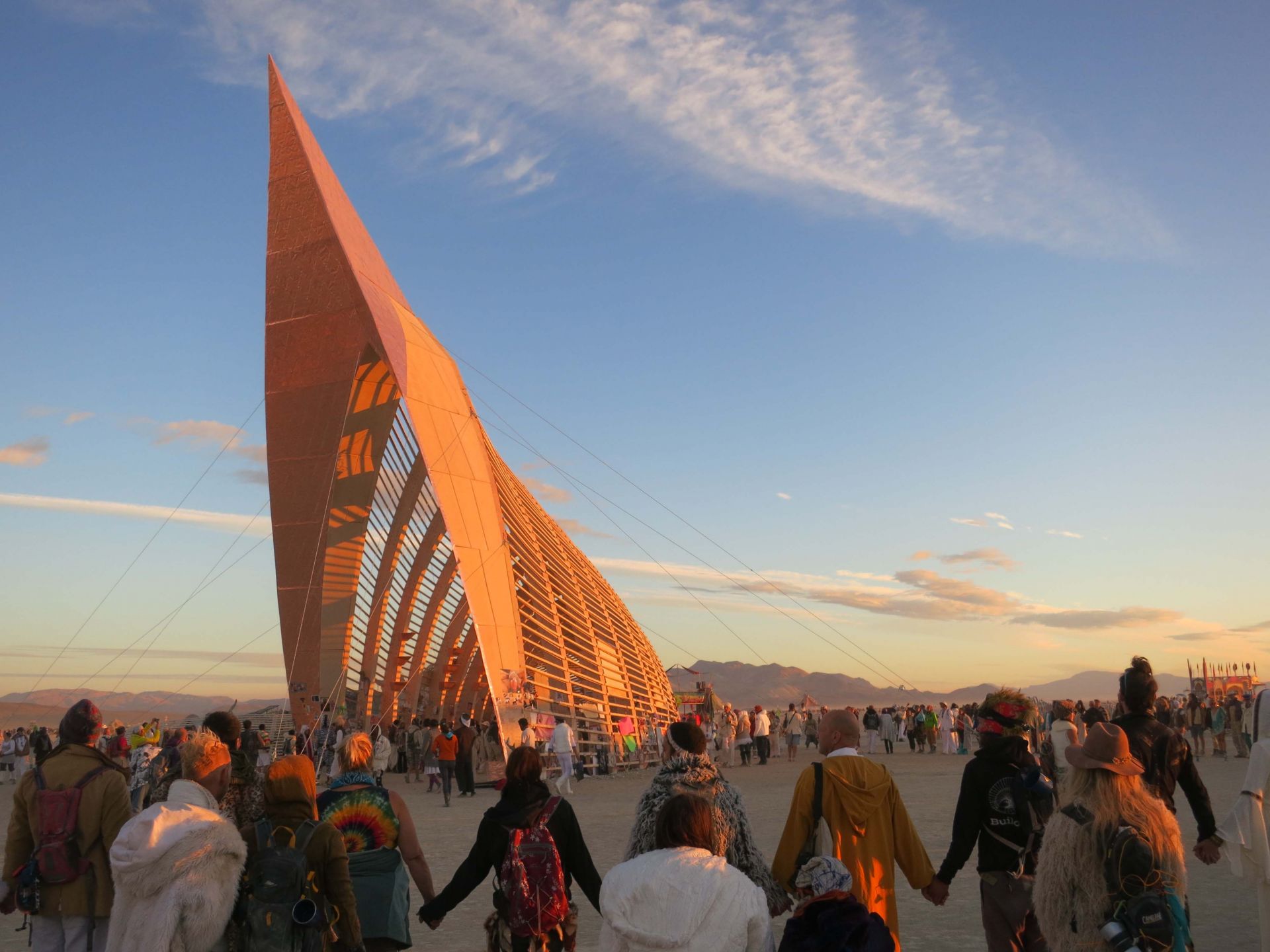
4: Temple of Promise (Burning Man 2015)
Erected in Nevada’s Black Rock Desert, the Temple of Promise served as a spiritual sanctuary during the Burning Man festival. Parametric tools facilitated the creation of its sweeping arch, optimizing the structure for both stability and minimal material use. The temple became a centerpiece of communal reflection, exemplifying how parametric design can foster meaningful human experiences.
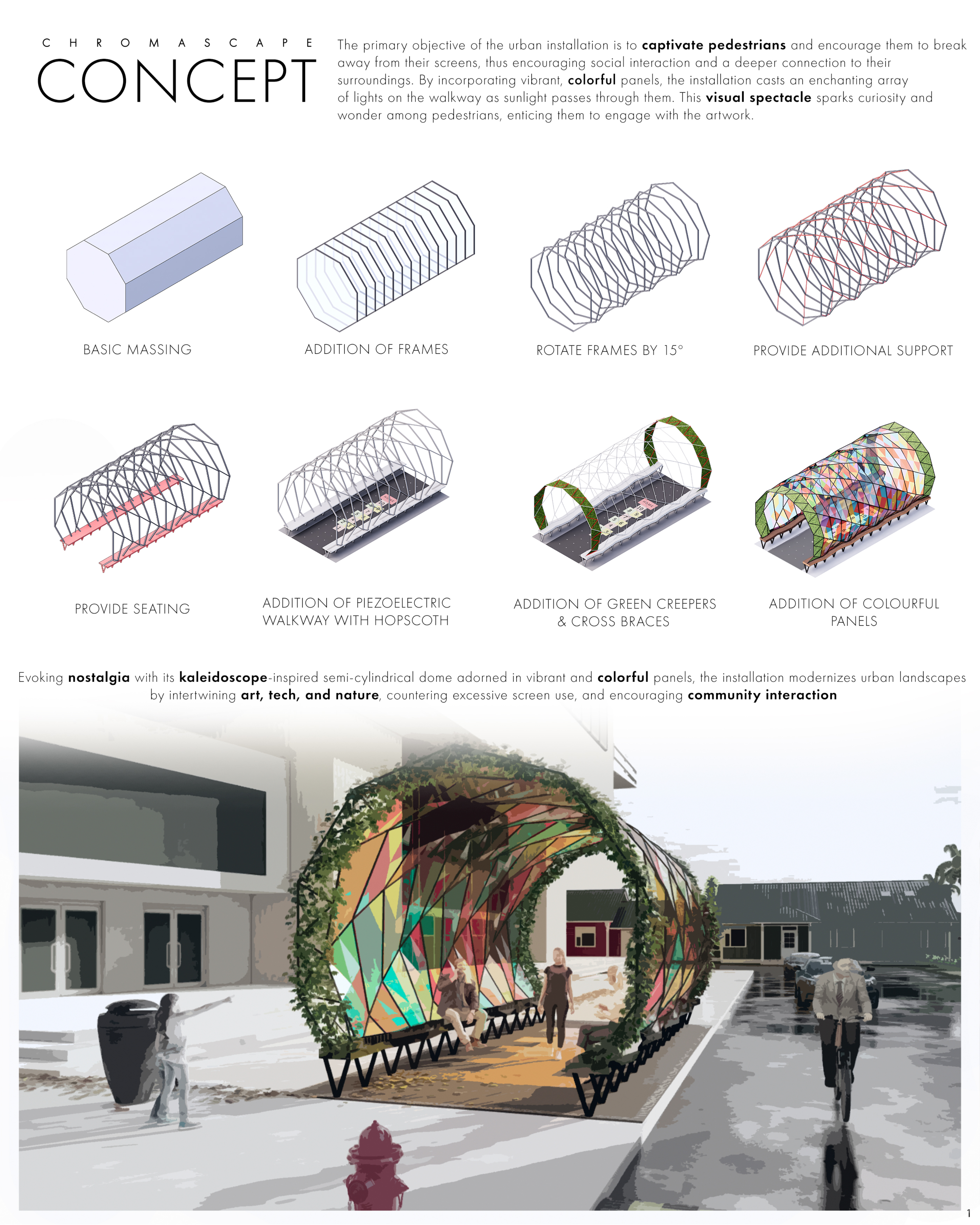
5. Chromascape
Designed by Yamini Srivastava, and Chitralekha Thakur, Chromascape is an interactive installation that changes color in response to environmental stimuli and visitor movement. The facade’s responsive elements were designed using parametric algorithms, creating a dynamic visual experience. It enhances urban engagement by transforming public spaces into interactive environments.
We have shortlisted this project as it’s a good example of simple yet parametrically configurable installation design. It is a handy example for those who are participating in the BeeGraphy Design Awards.

6. Swirling Cloud Bulletin Pavilion
Designed by Yamini Srivastava, and Chitralekha Thakur, Chromascape is an interactive installation that changes color in response to environmental stimuli and visitor movement. The facade’s responsive elements were designed using parametric algorithms, creating a dynamic visual experience. It enhances urban engagement by transforming public spaces into interactive environments.
We have shortlisted this project as it’s a good example of simple yet parametrically configurable installation design. It is a handy example for those who are participating in the BeeGraphy Design Awards.
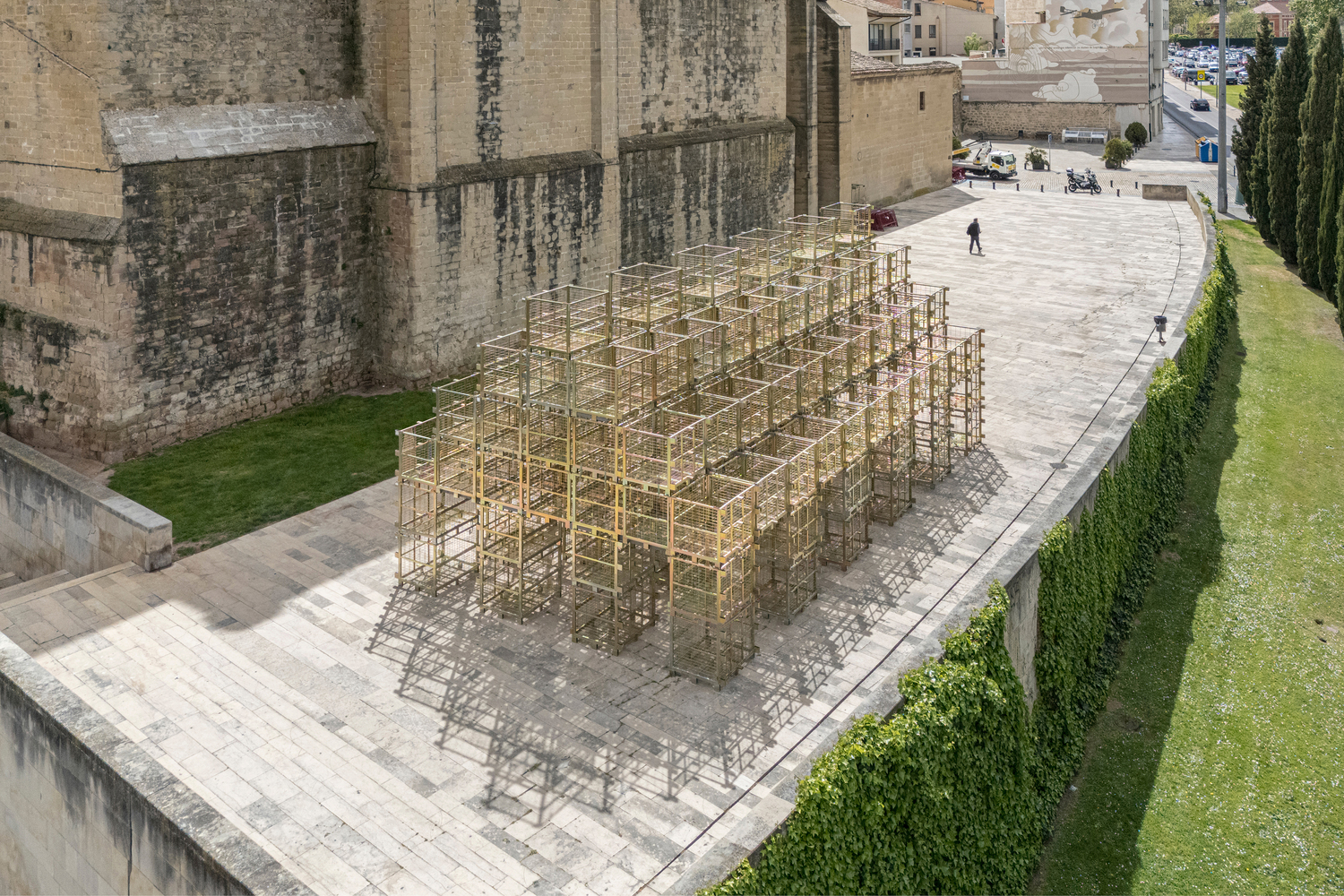
7. Off-Season Pavilion in Logroño, Spain
Designed by KOSMOS, is a sustainable architecture installation that repurposes local materials, including metal wine cages used in the region’s bodegas. This pavilion highlights the use of recycled materials to minimize environmental impact, while its design, inspired by agricultural sheds and basilicas, creates a dynamic space for social and cultural engagement.
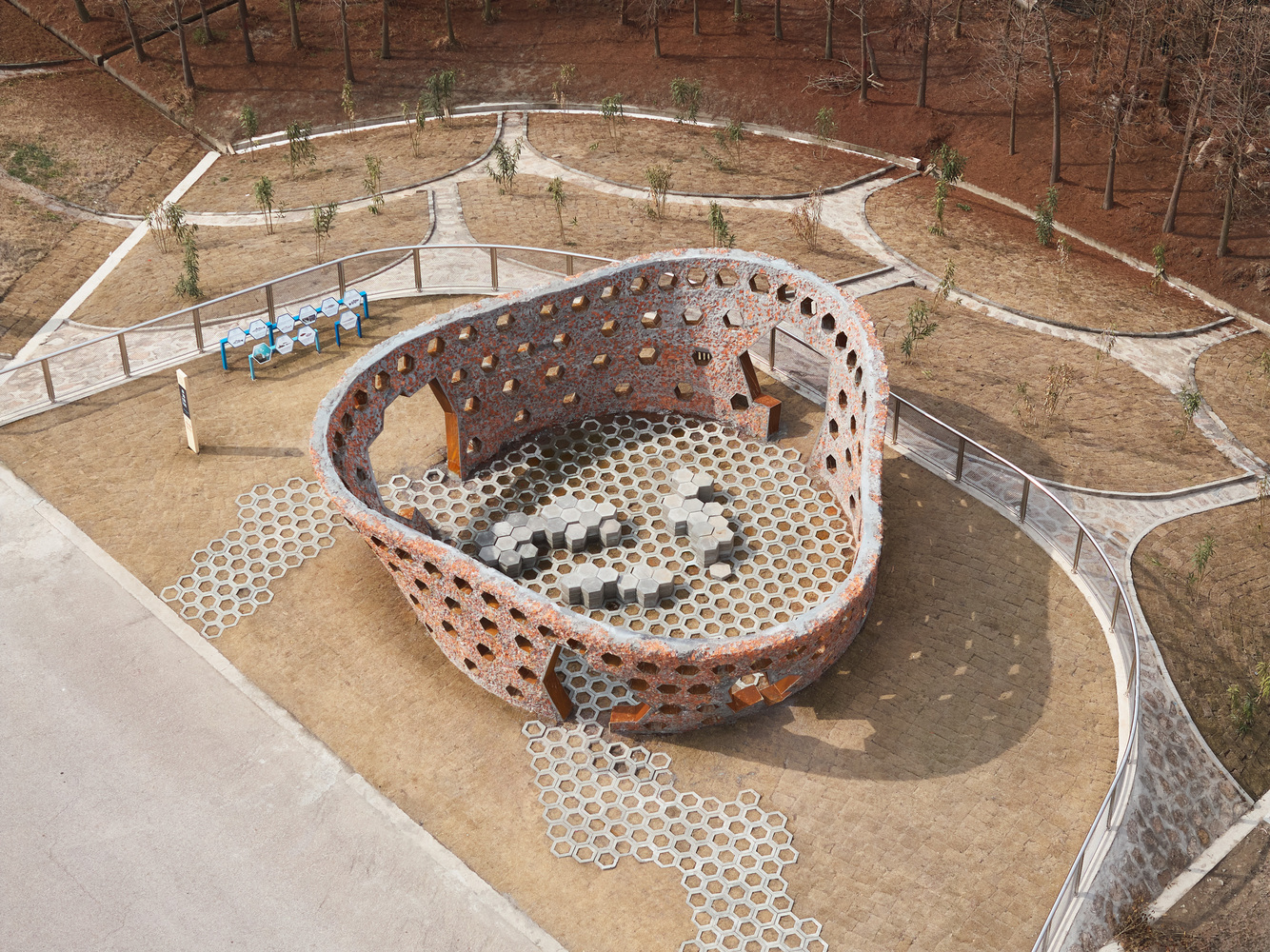
8. Three Ecological Pavilions by the Sea at Lingang China
Designed by HCCH Studio, blend architecture with marine ecology. Each pavilion uses sustainable materials and unique forms inspired by marine life, including a fabric membrane pavilion, a 3D-printed wave breaker, and a recycled brick coral reef. These installations promote environmental consciousness while enhancing the coastal landscape through innovative parametric design.
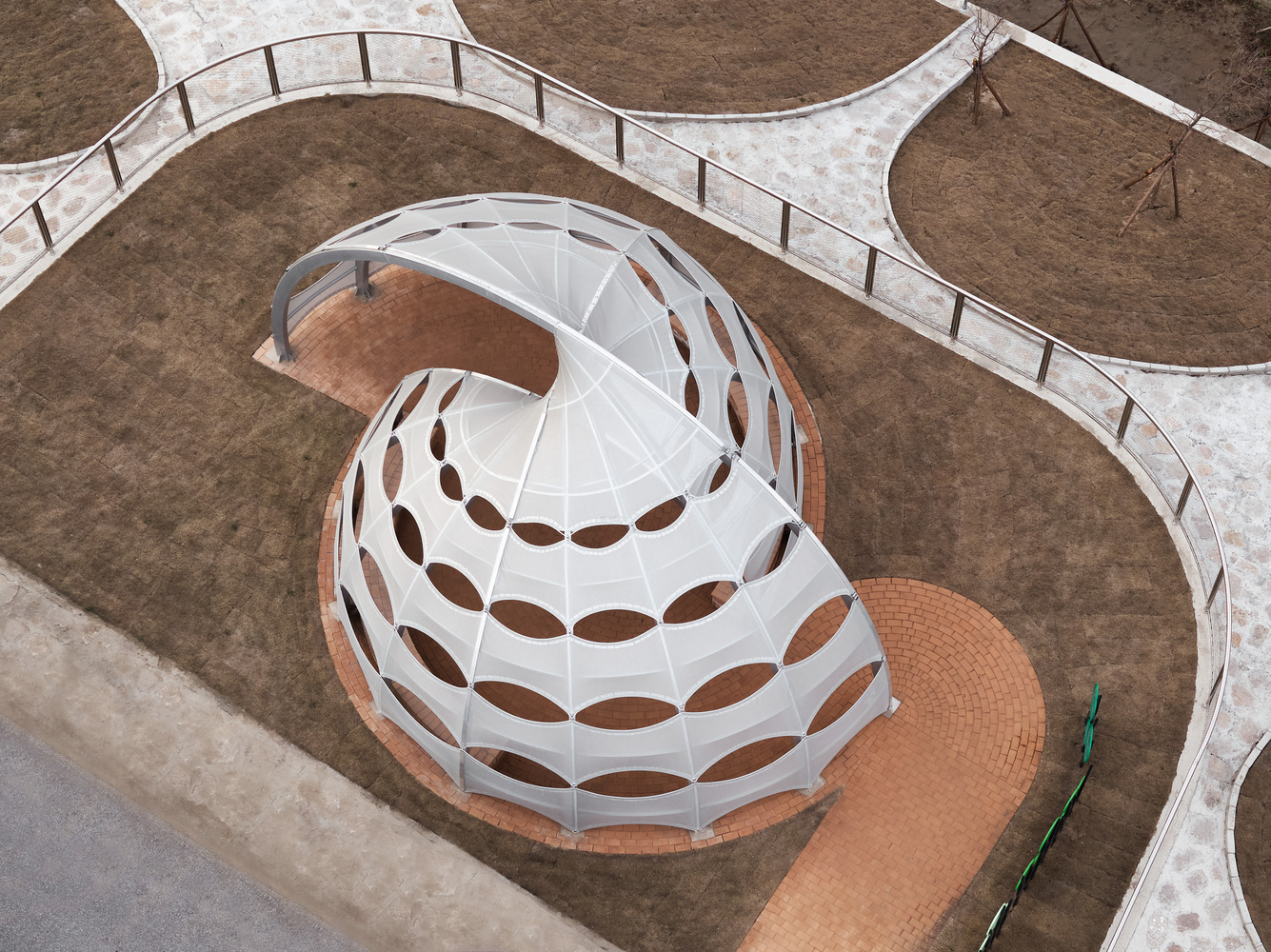
One of the Three Ecological Pavilions by the Sea at Lingang China
The Role of Computational Design in Urban Installations
Parametric and computational design have fundamentally changed the way we designers are using it in Installations. At its core, computational design leverages algorithms, data inputs, and parametric modeling to generate highly optimized, adaptable structures. In urban installations, these tools offer several key advantages:
- Adaptive Forms: Parametric modeling allows designers to create fluid, dynamic forms that are responsive to environmental conditions such as wind, sunlight, and foot traffic. This leads to installations that not only enhance aesthetics but also interact with their surroundings.
- Efficient use of Materials: Computational design enables the precise calculation of material quantities and structural loads. This ensures that installations are both cost-effective and environmentally sustainable, using the least amount of material for the highest possible structural efficiency.
- Interactivity and Engagement: Many urban installations incorporate sensors or responsive technologies, creating structures that engage with their users. Whether through changes in lighting, form, or movement, these designs bring public spaces to life, fostering a deeper connection between people and their environment.
However, the complexity of computational design presents challenges. It requires specialized skills and tools, including advanced software and fabrication technologies. Moreover, integrating computational design with traditional construction practices often demands collaboration across multiple disciplines, from architects and engineers to data scientists and fabrication specialists.

The BIG Heart installation at NYC Time Square by Bjarke Ingles Group
Shaping the Future of Urban Spaces with Parametric Design
Parametric design has the potential to transform the future of public spaces, introducing new possibilities for urban development:
- Dynamic and Responsive Public Spaces: With parametric design, urban spaces can be adaptive to real-time data inputs, such as traffic flow, weather conditions, or even the presence of pedestrians. This allows for the creation of spaces that change and evolve based on their use, offering flexibility and enhanced user experiences.
- Sustainability and Eco-Friendly Installations: Future trends in parametric design will increasingly focus on sustainability. From the use of locally sourced, recycled materials to the incorporation of energy-efficient technologies, these installations will help reduce the environmental impact of urban development while educating the public on ecological responsibility.
- Smart Cities and Interactive Urban Installations: The rise of smart cities will see more urban installations integrated with advanced technologies such as AI, sensors, and data analytics. These installations will not only respond to environmental factors but also provide valuable insights into urban planning, helping cities become more efficient, livable, and sustainable.
Parametric design is not only shaping the way we build but also how we experience and interact with urban spaces. The possibilities are endless as new innovations and technologies continue to push the boundaries of design and architecture.
Call to Action for the Beegraphy Design Awards
Parametric design has opened new horizons in urban installations, from sustainability to adaptive and interactive designs. As these examples illustrate, the future of urban architecture is dynamic, responsive, and deeply connected to both the environment and the communities that inhabit these spaces.
We invite you to be a part of this movement by participating in the Beegraphy Design Awards. The Urban Furniture and Installations category offers a platform for designers to showcase their parametric design capabilities and contribute to the future of urban spaces. This is your chance to push the boundaries of design, innovate new solutions, and gain global recognition for your work.

Beegraphy Jury Members : Urban Furniture & Installation Category
Join industry leaders like Grigor Grigoryan, Serial Entrepreneur and Founder of BeeGraphy Corp, Leonardo Gindri, Computational Designer and Speaker, and Lazar Duric, Computational Designer and Co-Founder of How to Rhino, as they judge groundbreaking designs from around the world. Submit your parametric designs today and play a role in shaping the cities of tomorrow.


